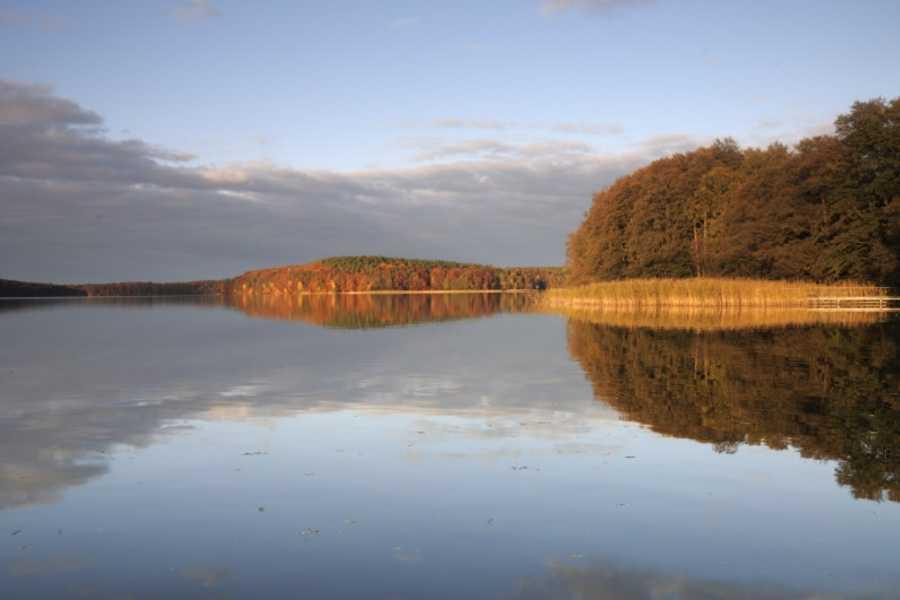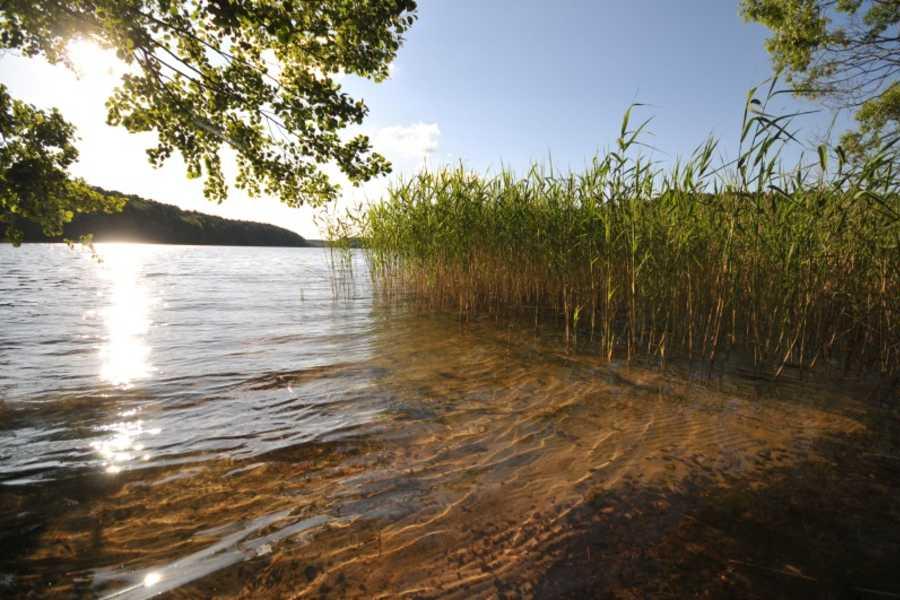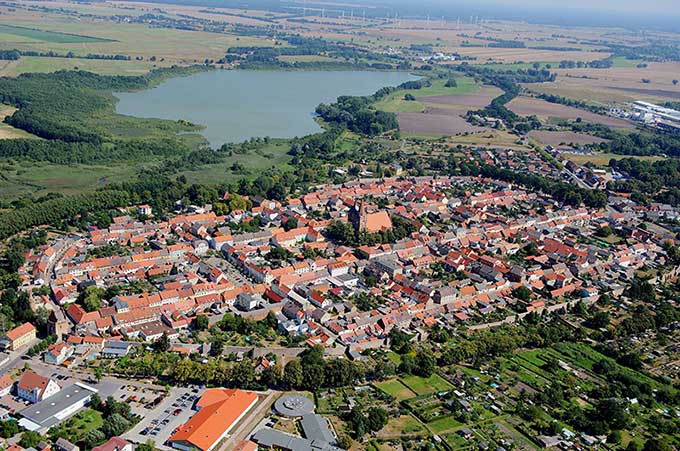Stechlin

Behind the name Stechlin lies not only Fontane's famous novel, but also a municipality in the district of Gransee and communities consisting of the villages Dollgow, Menz and Neuglobsow/Dagow. All three villages are located in the Stechlin-Ruppiner Land Nature Park and are popular excursion destinations as well as holiday resorts in the travel region between the Ruppiner Seenland and the Mecklenburg Lake District. As a state-recognised health resort, Neuglobsow/Dagow is known to many. Its fame is directly related to northern Germany's largest clear-water lake, the Stechlinsee. Around 97 million cubic metres of water are spread over an area of 4.25 square kilometres. If you want to go around it, you have to be prepared for a distance of about 16 kilometres. In some places, the bottom drops steeply downhill immediately behind the shoreline. At its deepest point, the Stechlin measures an impressive 69.5 metres. On average, you can see up to ten metres deep.
The legend of the red rooster, who comes up from the bottom of the Stechlinsee when a fisherman is fishing in a place he does not like, is eerie:
"Red and angry, and beats his wings until he foams and surges, and attacks the boat and shrieks and crows, so that it echoes through the whole Menzer Forst from Dagow to Roofen and as far as Alt-Globsow".
Lake Stechlin is one of the cleanest lakes in Germany. The Slavic name "steklo" means crystal clear and refers not only to the good water quality but also to the glassworks that used to be located here. The Leibniz Institute of Freshwater Ecology and Inland Fisheries is researching the influences of climate change on the lake with its lake laboratory. Detailed information on the project can be found here.
Dagow is the smaller of the two districts, but also the older. After the expulsion of the original settlers, the Slavs, the settlement was handed over to Lindow Monastery, which was founded in 1230. At the end of the 18th century, a new settlement took place as part of Prussia's internal colonisation, after Dagow had been abandoned in the 15th century.
Menz was first mentioned in a document in 1290. Archaeological traces date back to Slavic times. For example, there was a castle rampart with a settlement in front of it on the Wallberg, which lies directly on the lake. In the 15th century, Mecklenburg robber barons raided the village. In 1638, imperial troops under General Matthias Gallas burned down 28 settlements in the Stechlin-Ruppiner Land, including Menz. The people of Menz became prosperous at the beginning of the 18th century. The construction of the Polzow Canal favoured forestry. Timber from the Menz Heath reached Berlin on the artificially created waterway and the Havel. The visitor centre of the Stechlin-Ruppiner Land Nature Park is just as much at home here as the Stechlin Nature Park House and the "Stechlin-Ruppiner Land" nature watch. The adventure playground, inaugurated in April 2009, invites visitors to romp around.
In Dollgow, history can not only be seen, but also heard. In the church, built in 1767, hangs one of the oldest bells in Brandenburg, cast in 1490 by the Dutch master Gerhard de Wou. The church is also adorned by the Baroque pulpit altar, which was renovated in 2007, a Lüttkemüller organ from 1882 and a baptismal font from 1839.
The first mention of Dollgow documents one of the dark hours of the picturesquely lakeside village: in 1422, "Dolghe" fell victim to looting. During the 30 Years' War, not only did the plague ravage the village, but imperial troops under General Matthias Gallas reduced farmhouses and the church to rubble in 1638. Behind the former school building in the centre of the village, the so-called "Gallas lime tree" commemorates the commander.







